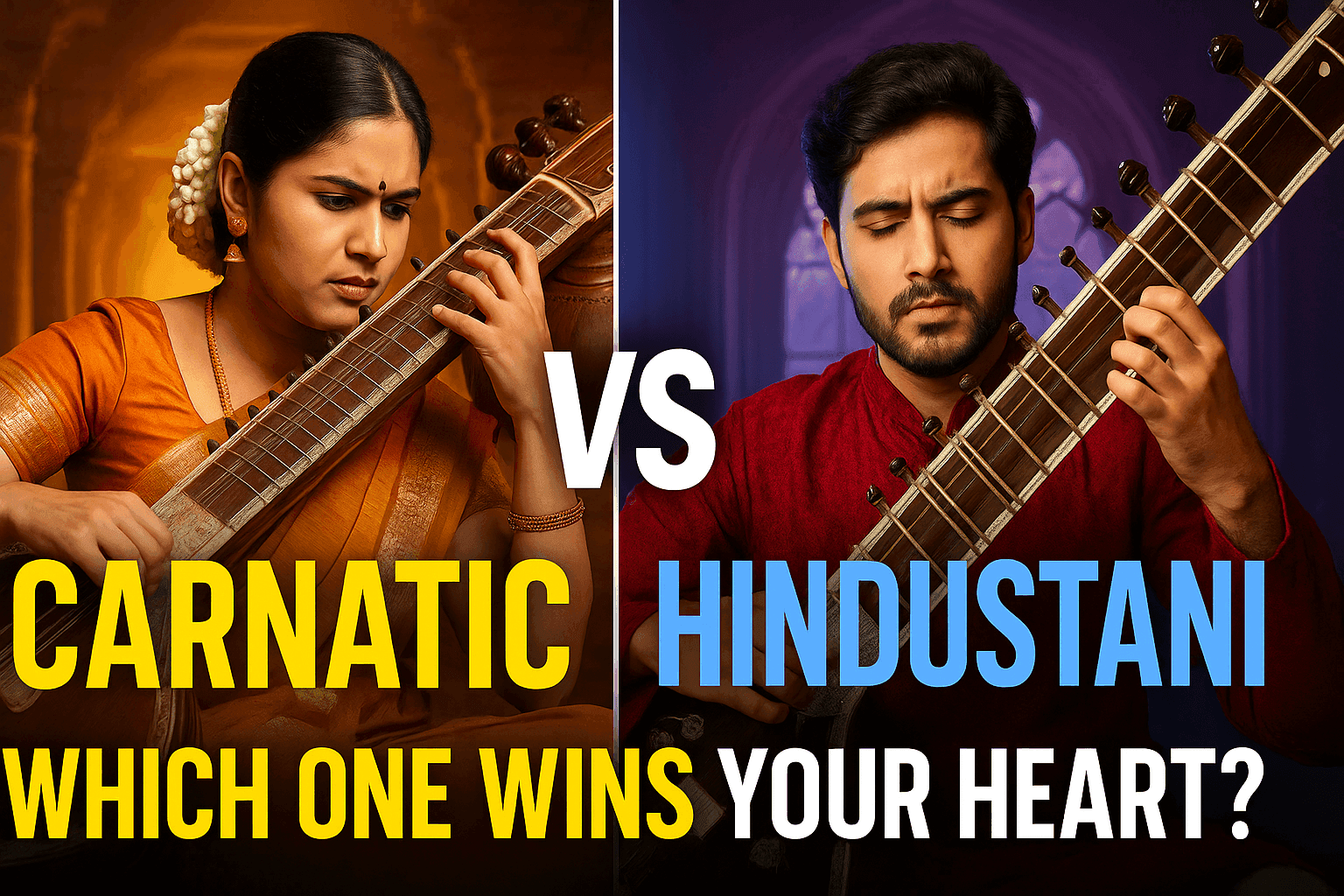
Art Gharana — 12 Mins read
Carnatic vs Hindustani Classical Music: Highlights, Differences, and Choosing the Best Style
Vocal
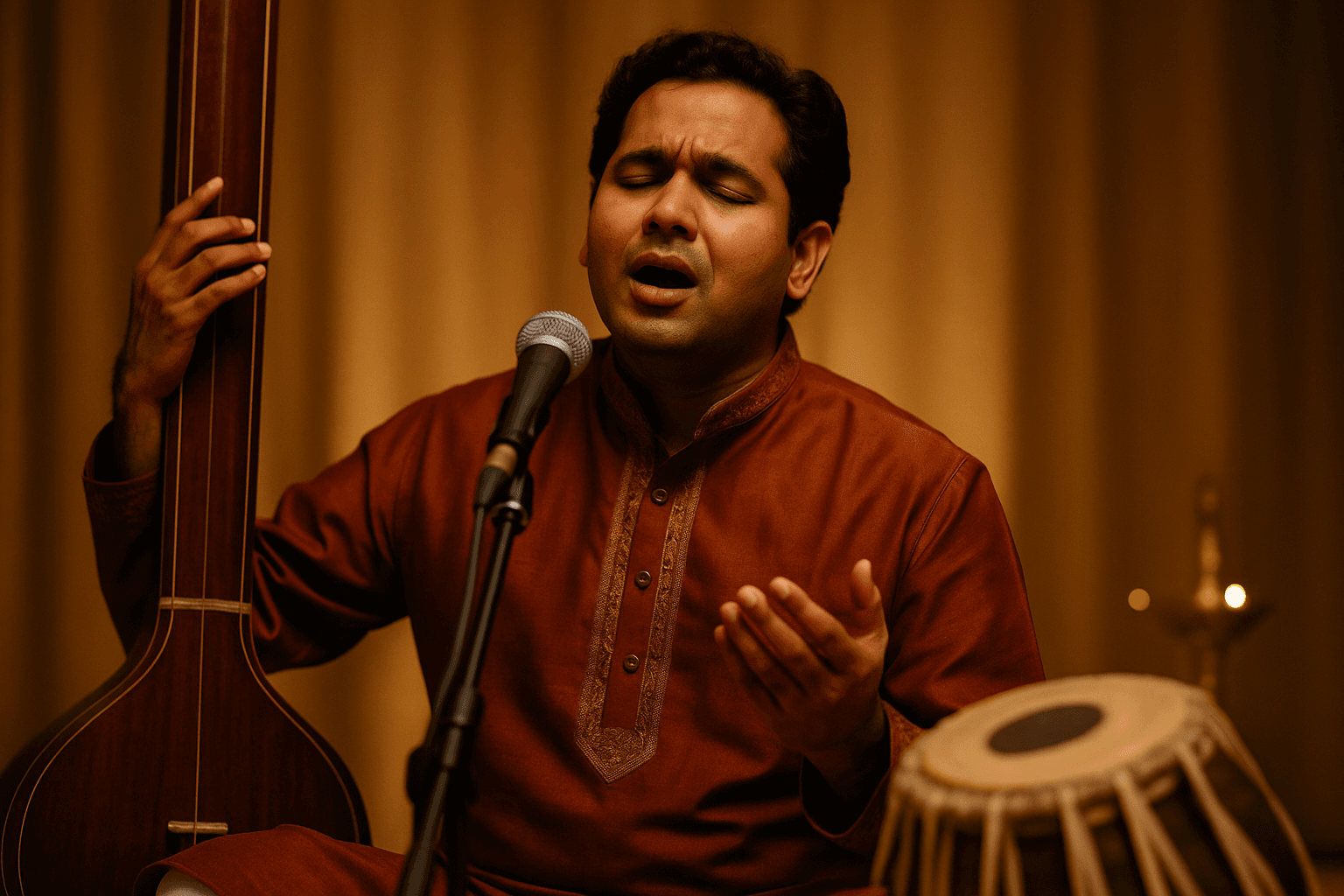
Have you ever listened to Indian classical music and felt a deep emotional pull—even without understanding the lyrics? That’s the magic of the raga.
Whether you’re casually exploring new sounds or diving deep into Indian raga music, you’ll quickly discover that the raga is not just a musical scale—it’s a living, breathing expression of mood, time, and tradition. But what exactly is a raga, and why does it form the very soul of Indian classical music?
In this beginner-friendly guide, we’ll unravel the mystery behind raga music, exploring how these melodic frameworks shape everything from devotional chants to cinematic scores. If you’ve ever typed “what is raga in Indian music” or wondered about the difference between raag and ragam, you’re in the right place.
We’ll journey through the definition of raga, its emotional depth, types, and how you can begin to appreciate or even learn one yourself. Whether you’re a curious listener or an aspiring vocalist, this guide will help you understand the music raaga in a way that feels both accessible and inspiring.
Let’s dive into the mesmerizing world of raga—where every note tells a story.
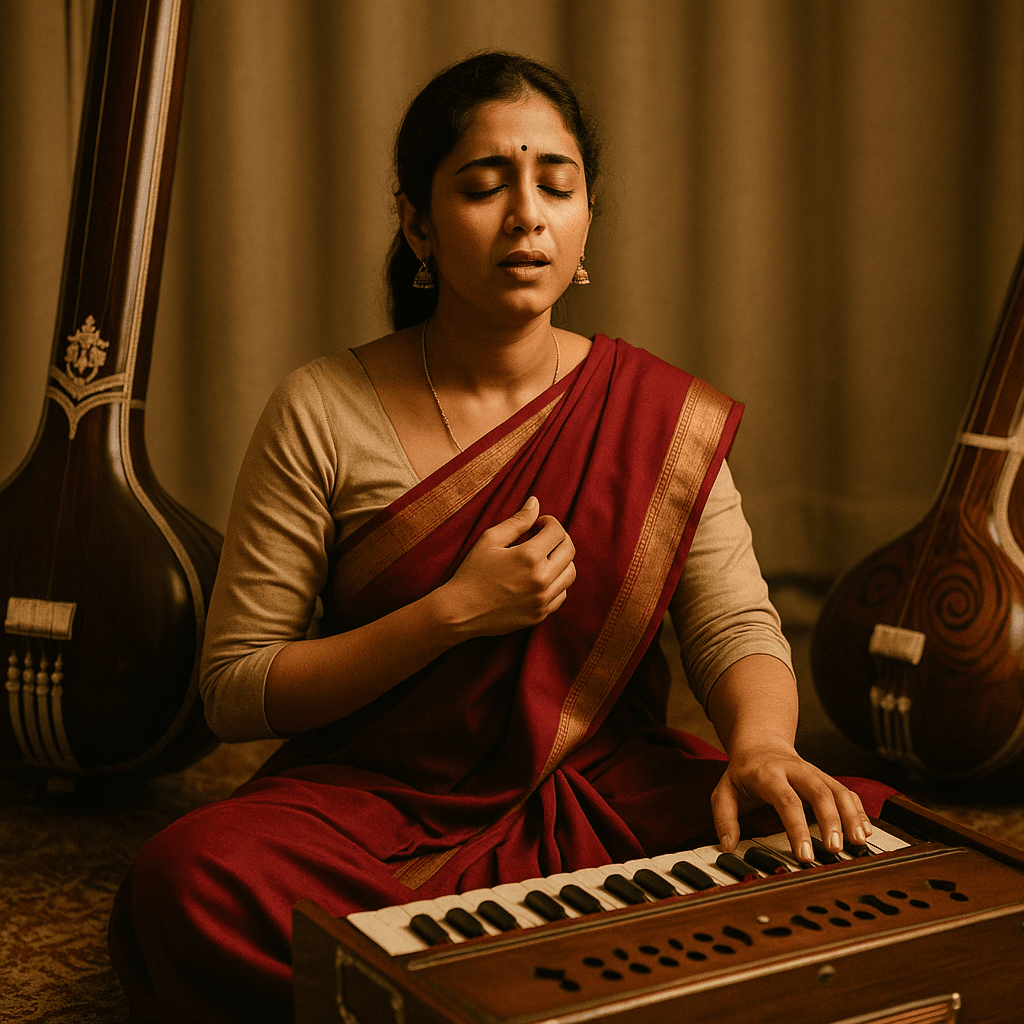
Have you ever heard a piece of Indian music that instantly stirred your emotions—even though you didn’t understand a single word? That’s likely the power of a raga at work.
A raga (also spelled raag or ragam) is more than just a sequence of musical notes. It's a melodic blueprint that evokes a specific mood or feeling, steeped in centuries of cultural and spiritual tradition. But if you're wondering, "What is raga in Indian music, really?"—you’re not alone.
Let’s break it down simply.
A raga is a structured combination of musical notes designed to express an emotional landscape. Unlike Western scales, which are fixed and formulaic, ragas are fluid and rich with nuance.
In short, a raga isn’t just played—it’s felt.
Unlike a simple musical scale, a raga comes alive through interpretation. Two musicians can perform the same raga differently—adding their own creativity while staying within the raga’s rules. This makes each performance a fresh, living experience.
Consider these differences between a raga and a Western scale:
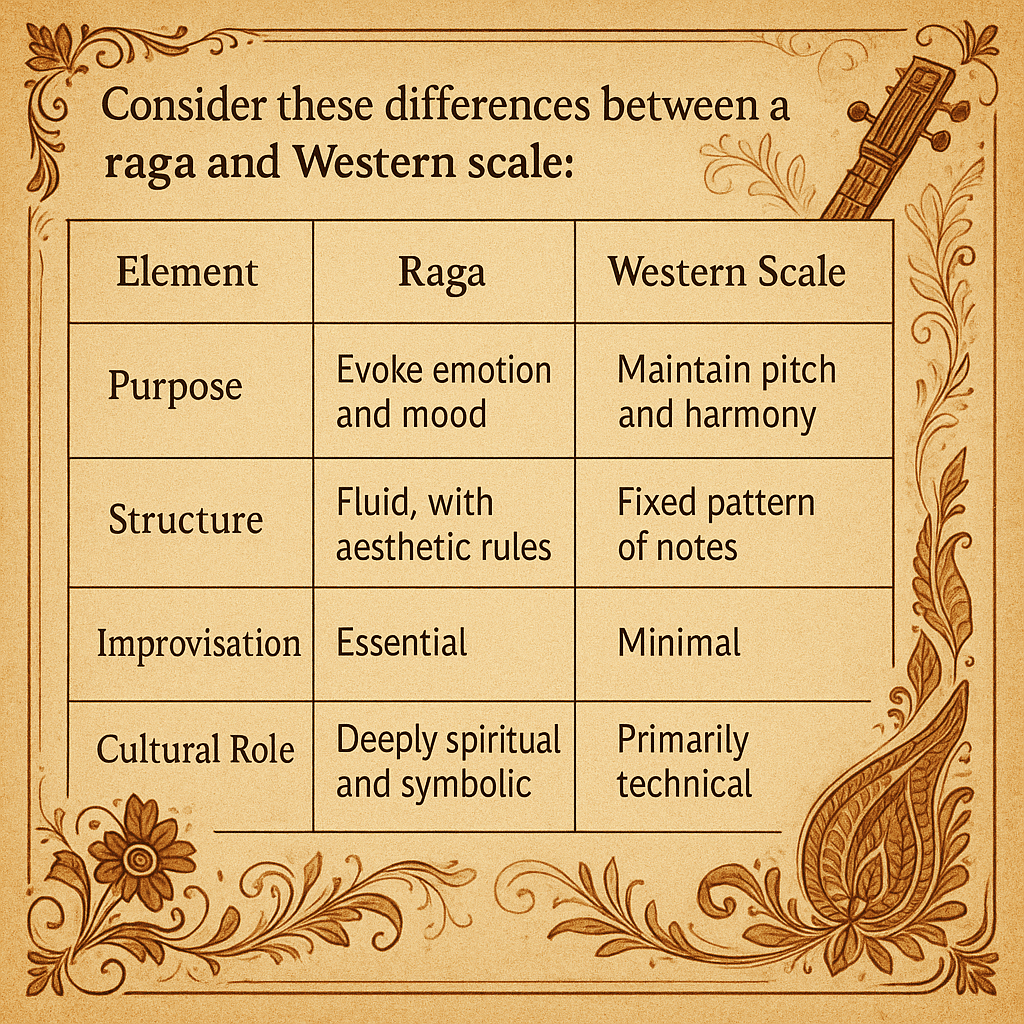

So far, we've explored what a raga is and where it comes from—but how does it actually work? If you've been curious about the inner structure of raga music, you're not alone. Many beginners are fascinated by its emotional power, but feel overwhelmed by the complexity.
The good news? You don’t need to be a professional musician to understand the basic framework of a raag. Let’s unpack it in a simple, approachable way.
Unlike Western music scales that follow a fixed pattern, a raga is more like a set of musical rules wrapped in emotional intent. It's defined not only by which notes are used, but also how they are used.
Here are the key components that shape every raga:
Here’s where it gets exciting. Once a performer understands the structure of a raga, they have the freedom to improvise within those boundaries. No two performances of the same raga will ever be identical—and that’s by design.
A raga performance typically includes:
This balance between structure and freedom is what makes Indian raga music both precise and deeply expressive.
Each raga is designed to stir a specific rasa—or emotional flavor. Some evoke devotion, others love, melancholy, or joy. This emotional nuance is what sets raag music apart from many other musical traditions.
Here’s a glimpse at a few ragas and the moods they evoke:
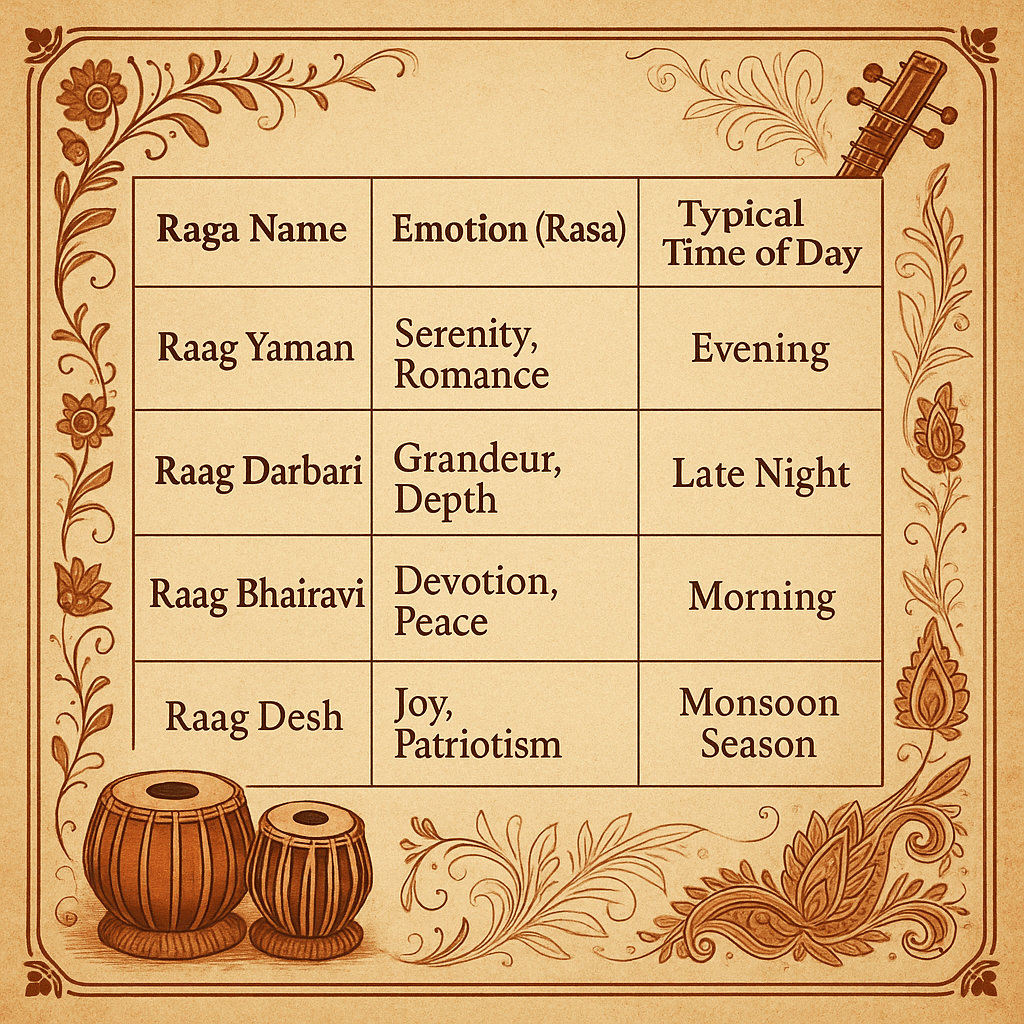
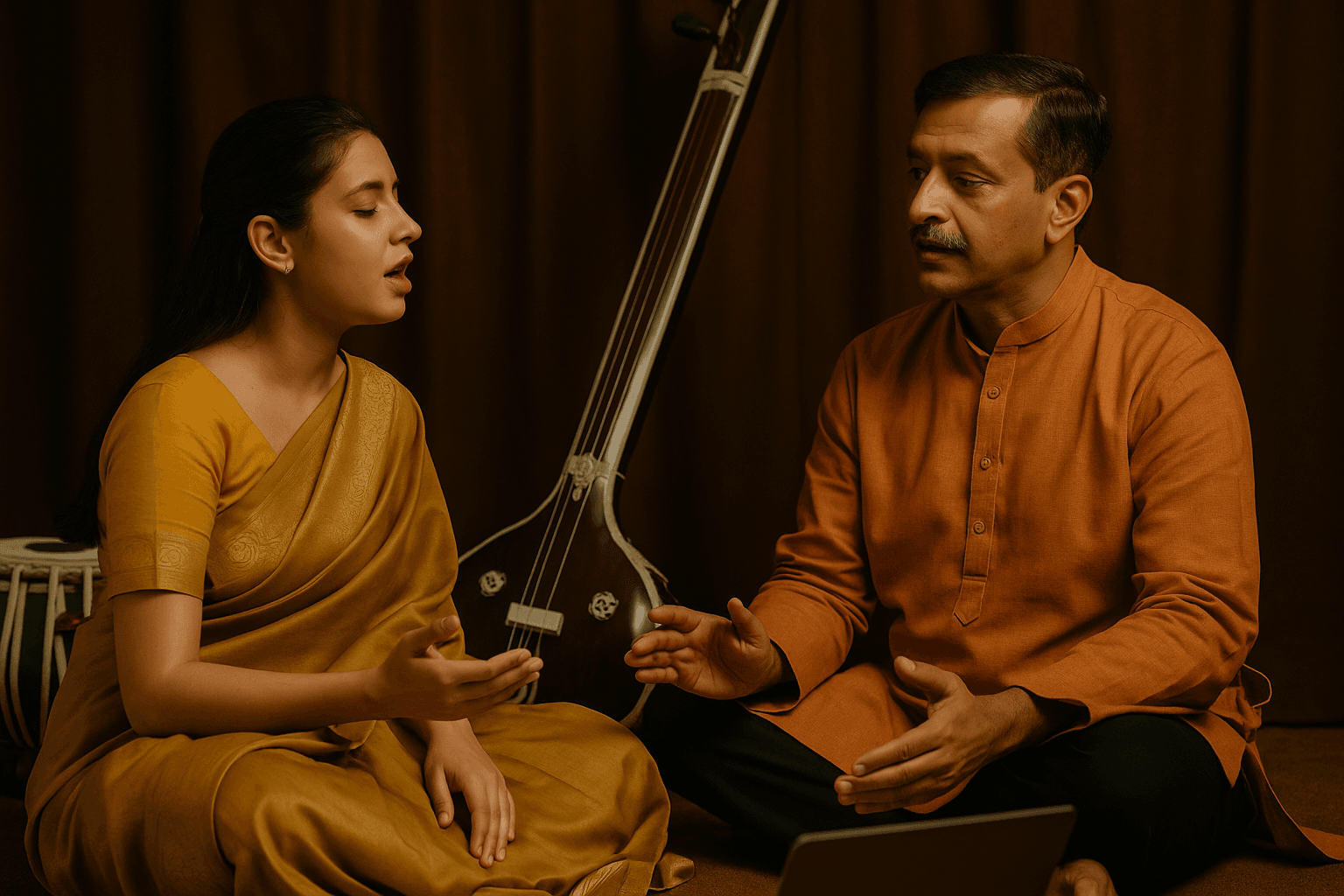
Ever wondered why some melodies feel joyful and uplifting, while others move you to quiet contemplation? That’s the beauty of raga music—its emotional range is vast, and each type of raga brings its own mood, story, and identity.
But with hundreds of ragas in the Indian classical tradition, where do you begin? Let’s take a closer look at the broad categories and learn how these ragas are grouped, experienced, and celebrated.
Indian classical music is divided into two major systems:
Although both traditions use ragas as their foundation, their interpretation and presentation vary—giving you twice the treasure to explore.
To make sense of the many ragas, musicians use parent scales or frameworks:
In Hindustani Music:
In Carnatic Music:
Understanding these systems helps students and listeners trace the roots and variations of each raga.
Did you know many ragas are meant to be sung or played at specific times of day or during certain seasons? This time-theory adds an extra dimension of emotion and experience.
Here’s how ragas are classified in practice:
1. Time-Based Ragas - Morning Ragas – Raag Bhairav, Raag Todi - Evening Ragas – Raag Yaman, Raag Marwa - Late Night Ragas – Raag Darbari Kanada
2. Seasonal Ragas - Monsoon Ragas – Raag Megh, Raag Desh - Spring Ragas – Raag Basant, Raag Bahar
3. Mood-Based Ragas - Romantic – Raag Khamaj - Devotional – Raag Bhairavi - Joyful – Raag Desh
This ability to mirror nature and emotion is what makes Indian raga music such a unique form of artistic expression.
If you're new to the world of ragas, here are a few classics that offer a great starting point:
Each of these ragas carries a story, a color, and an emotion that you can discover through listening—and better yet, learning.
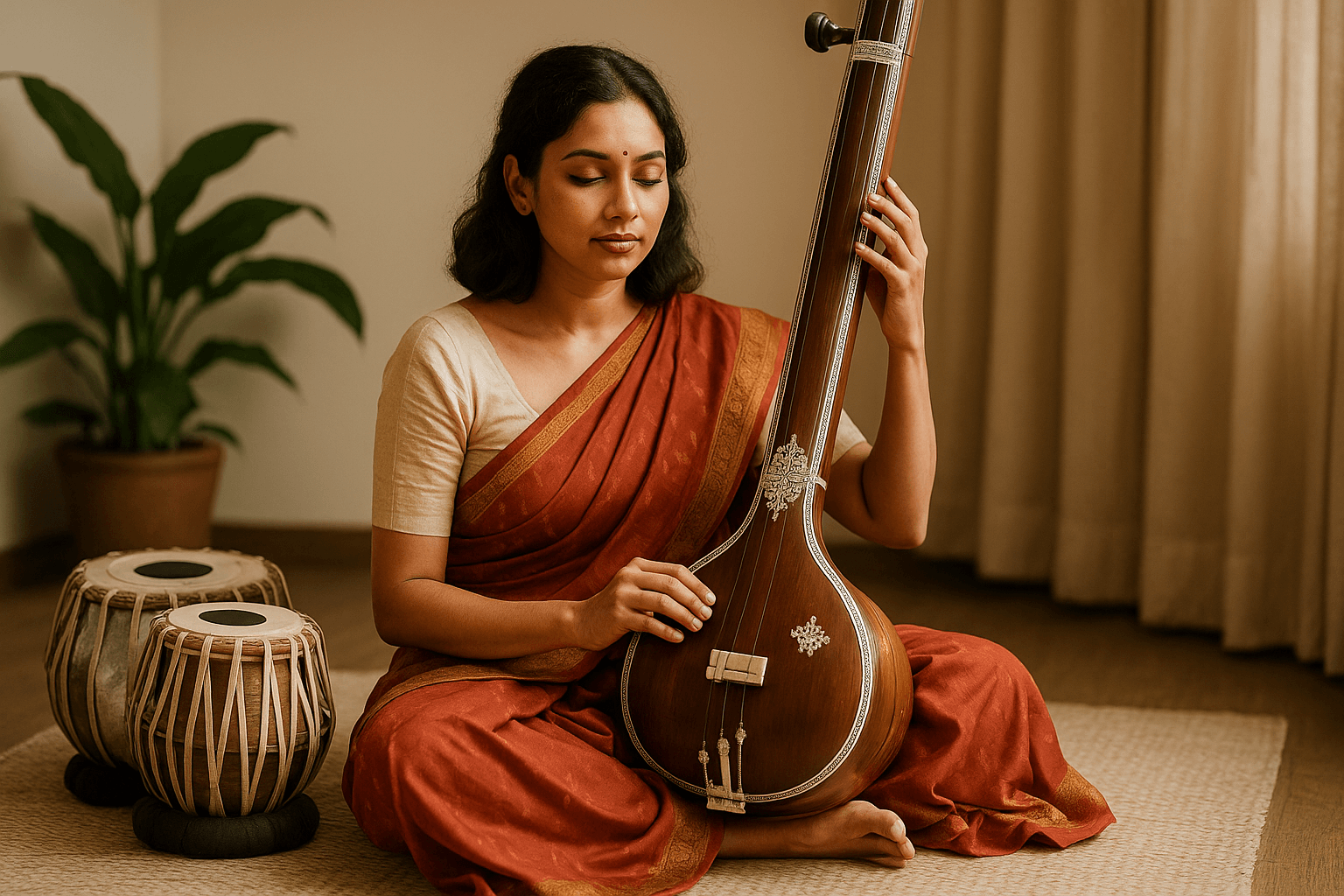
Are you considering diving into the world of raga music but wondering why it matters? What makes Indian raga music stand apart from other musical traditions, and how can learning it benefit you—whether you’re a beginner or an experienced musician?
Let’s explore how mastering ragas can elevate your music and deepen your connection to sound.
At its core, a raga isn’t just a scale or a tune—it’s a vibrant, living entity designed to evoke emotions, moods, and spiritual experiences. Here’s why learning to play or sing ragas can be truly transformative:
If you play an instrument or sing, studying ragas can refine your musicality in multiple ways:
Feeling inspired? Here’s how you can begin:
Whether you're drawn to the serene notes of a dawn raga or the bold flourishes of a late-night performance, understanding the types of raga is key to deepening your musical journey.
At Artgharana, we introduce students to both the art and science of raga music, tailored to their pace and passion. You’ll learn not just to recognize ragas, but to truly connect with them.
Want to experience this magic yourself? Book a free trial class and let your musical exploration begin.
The diversity of music ragas is both a challenge and a joy. As you explore different types, you’ll realize that each raag is not just a composition—it’s a living emotion waiting to be felt, expressed, and shared.